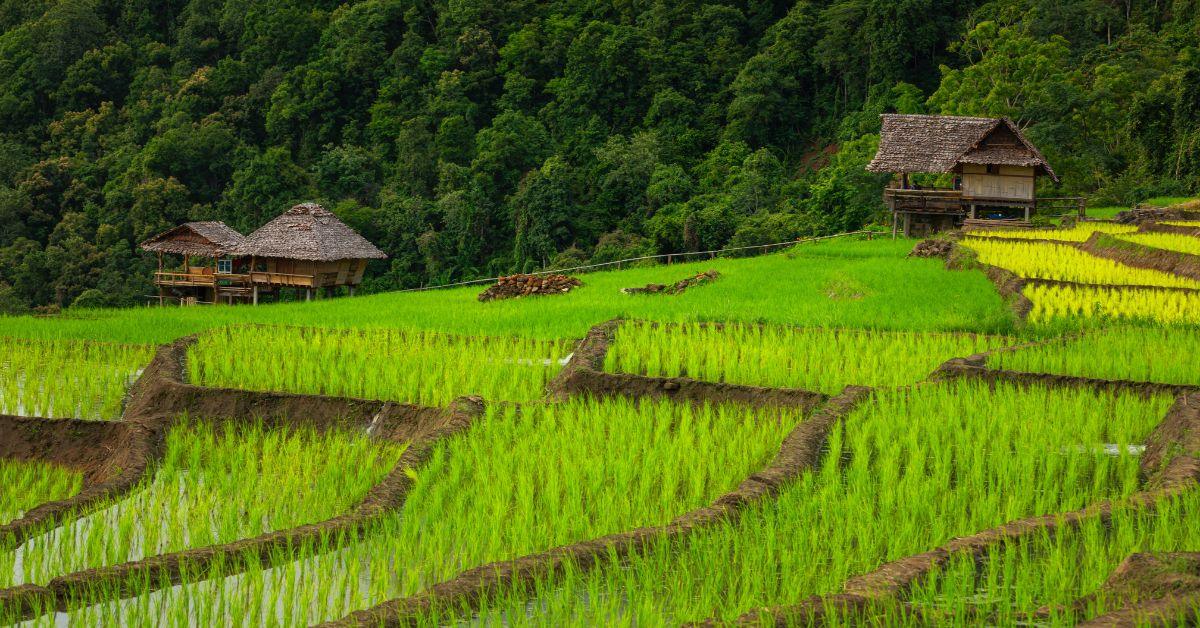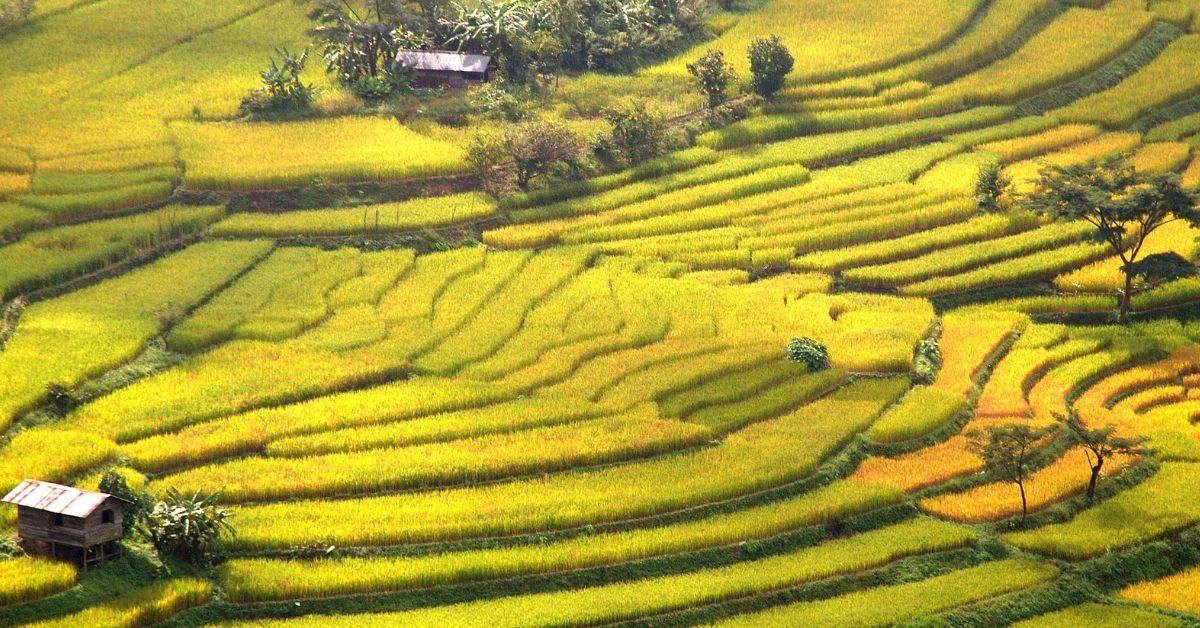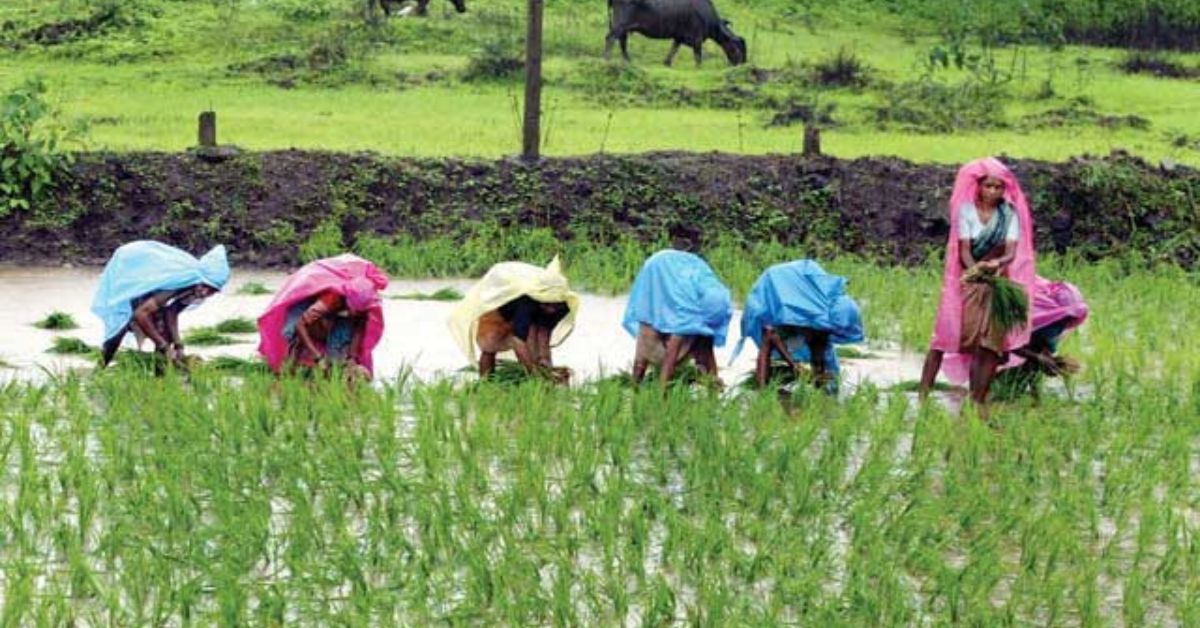How 1000-YO Farming Systems in Nagaland & Arunachal Tackle Climate Change & Water Scarcity
Not all innovation comes with sensors and satellites. In the hills of Nagaland and the lush valleys of Arunachal Pradesh, two traditional farming systems — Zabo and Apatani — have quietly demonstrated how communities can thrive by working with nature instead of against it.
These systems weren’t designed in labs. They emerged from necessity, observation, and a deep respect for the land. Zabo and Apatani are more than just farming methods—they are integrated, sustainable ecosystems that conserve water, grow food, support biodiversity, and bring communities together. As climate change disrupts rainfall and damages soil, these living blueprints offer valuable lessons for the rest of the country—and the world.
What is Zabo?
The Zabo system is practiced by the Chakhesang tribe in Kikrüma village, located in the Phek district of Nagaland. The word ‘Zabo’ means ‘impounding water’—a fitting name for a system built around harvesting every drop of rainfall in a place where water can be scarce.
Rainwater is collected from forested hilltops and flows through a carefully built chain of desilting tanks that remove sediment. From there, it is stored in ponds lined to prevent seepage. The water doesn’t just irrigate fields—it first passes through livestock enclosures, picking up natural manure along the way. When it finally reaches the rice fields, it brings both moisture and nutrients, fertilising the land without a single drop of chemical input.
 Rainwater is collected from forested hilltops and flows through a carefully built chain of desilting tanks that remove sediment. Picture source: Shutterstock
Rainwater is collected from forested hilltops and flows through a carefully built chain of desilting tanks that remove sediment. Picture source: Shutterstock
Crops like rice, maize, and vegetables grow downstream. Bunds (field borders) are used to grow medicinal plants or for small-scale horticulture. Fish are introduced into ponds or paddy fields.
Even the livestock — usually pigs, poultry, or cattle — play a role in completing the nutrient cycle. In about one hectare of land, Zabo practitioners manage forests, water, crops, livestock, and aquaculture—all working in balance.
What is the Apatani system?
In the Ziro Valley of Arunachal Pradesh, the Apatani tribe has practiced a distinct but equally sophisticated form of water-integrated farming for generations.
Unlike Zabo, the Apatani method revolves around permanent, terraced paddy fields that are irrigated by mountain streams using a network of bamboo channels and water regulators. These terraces are designed to trap water with precision.
Once the rice is transplanted, farmers introduce fish—usually common carp—into the same fields. The fish feed on insects and weeds, aerate the soil with their movement, and fertilise the crop through their droppings.
 What makes the Apatani system unique is its year-round sustainability. Picture source: Shutterstock
What makes the Apatani system unique is its year-round sustainability. Picture source: Shutterstock
Waste from homes and animals is used as compost, while nitrogen-fixing plants like azolla and lemna are cultivated to keep the soil fertile. Bunds are used to grow vegetables, pulses, and finger millet. Almost nothing is wasted.
What makes the Apatani system unique is its year-round sustainability. The same patch of land produces rice, fish, vegetables, and pulses, while also protecting water sources and forest cover. It’s low on inputs but high on efficiency.
When did these systems start?
The Apatani system is several centuries old and was originally developed as an alternative to shifting cultivation. As the Apatani people settled in the Ziro Valley, they began refining their terraced irrigation method. By the 1960s, the rice-fish system became a well-established practice, with formal documentation and support from agricultural bodies.
Zabo, meanwhile, evolved about 80 to 100 years ago, as a response to water scarcity in the rain-shadow areas of Nagaland. Local communities realised that instead of chasing water, they needed to trap and use what little rain they had more efficiently. What followed was a system of layered, multi-use zones—from forest catchments to fertile fields—that made every drop count.
How are they practised today?
Both Zabo and Apatani systems are still practiced today, although on a smaller scale than before. In Kikrüma, the Zabo method is maintained through community institutions like Village Development Boards. Tasks like clearing desilting tanks, managing livestock yards, or monitoring pond levels are done collectively.
 Local communities realised that instead of chasing water, they needed to trap and use what little rain they had more efficiently. Picture source: DynamiteNews
Local communities realised that instead of chasing water, they needed to trap and use what little rain they had more efficiently. Picture source: DynamiteNews
In Ziro Valley, the Apatani system continues to be part of everyday life, sustained by tribal customs and village councils. Water distribution, field maintenance, and fish stocking are often communal tasks. While some modern inputs have crept in, many households still rely primarily on organic waste, traditional seed varieties, and local knowledge.
What stands out in both cases is that these systems are self-regulating, low-cost, and rely heavily on community participation—something sorely missing in most modern agricultural models.
What makes these systems so special?
- Resource Efficiency: Both systems use every element — water, waste, animals, plants — in a circular way, with minimal external inputs.
- Climate Resilience: Because they are rain-fed and forest-connected, these systems can withstand moderate droughts or shifts in rainfall patterns.
- Food and Nutritional Security: The integration of rice, fish, vegetables, and livestock ensures diverse diets and year-round supply.
- Cultural Continuity: They are deeply embedded in the social fabric of the communities that use them, passed down through stories, customs, and lived practice.
- Biodiversity Conservation: They protect native species, water tables, and forests, all while producing food.
Why it matters today
As India grapples with water stress, depleting soils, and the limits of high-input farming, the Zabo and Apatani systems offer grounded alternatives. They aren’t relics of the past—they’re models for the future. In an era when sustainability is a global buzzword, these indigenous practices show us what it actually looks like on the ground.
By learning from them—not just as techniques, but as philosophies of coexistence—we stand to gain more than just better farming. We gain a way of seeing the land, the water, and each other differently. Not as resources to exploit, but as relationships to nurture.
News